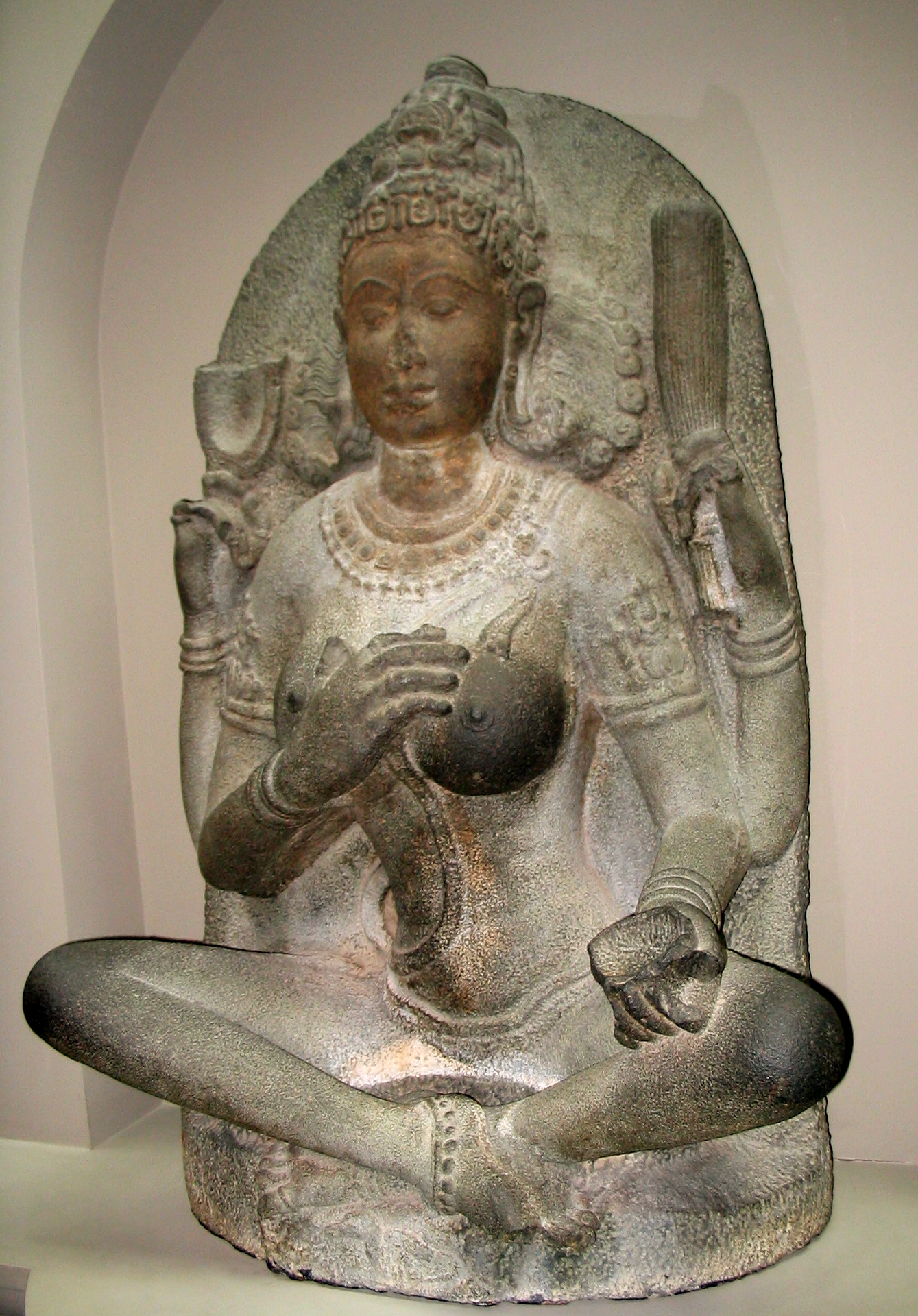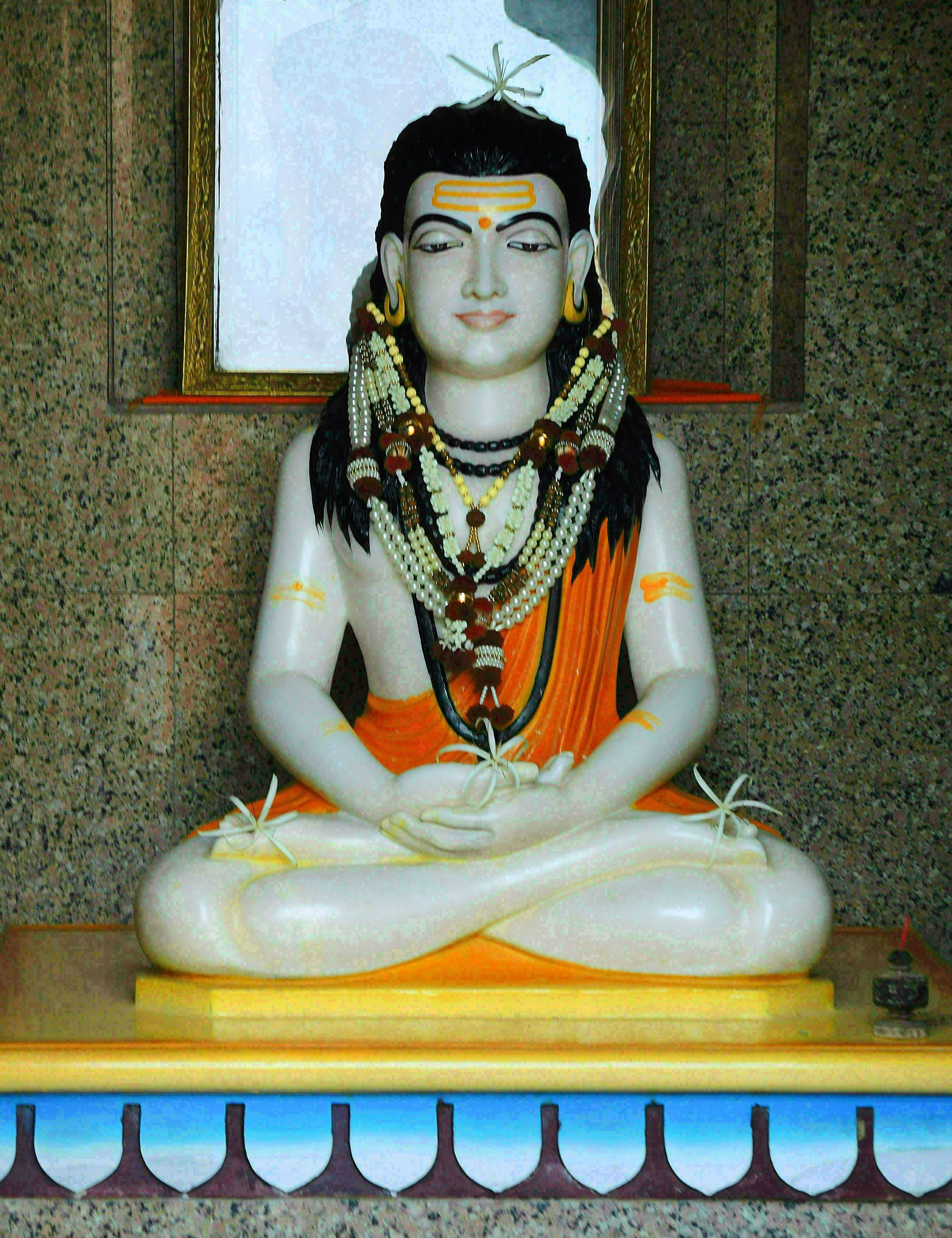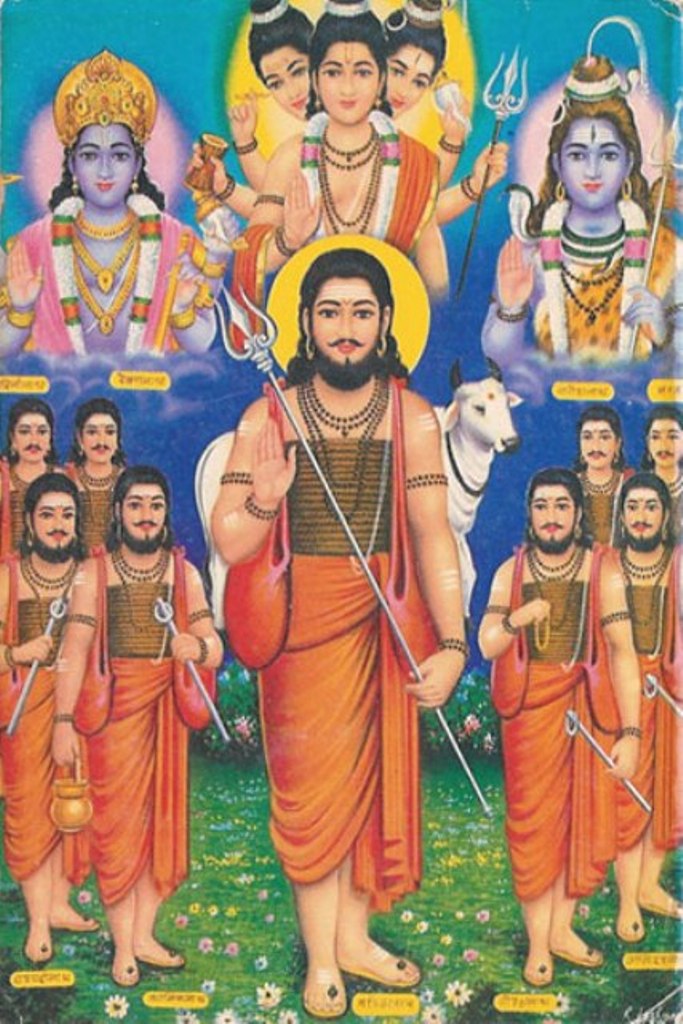|
Yogini
A yogini (Sanskrit: योगिनी, IAST: ) is a female master practitioner of tantra and yoga, as well as a formal term of respect for female Hindu or Buddhist spiritual teachers in the Indian subcontinent, Southeast Asia and Greater Tibet. The term is the feminine Sanskrit word of the masculine '' yogi'', while the term " yogin" is used in neutral, masculine or feminine sense. A yogini, in some contexts, is the sacred feminine force made incarnate, as an aspect of Mahadevi, and revered in the yogini temples of India. These often revere a group of 64 yoginis, and are named as such, but can also have 42 or 81 yoginis. The names of the 64 yoginis vary in different classifications. History According to Indologist and Yoga-Tantra scholar David Gordon White, yoginis are first mentioned in Indian literature in the sixth-century Hindu Agni Purana, with their origins rooted in the Vedic tradition. Their development reflects a synthesis of Vedic and classical Hindu elements. ... [...More Info...] [...Related Items...] OR: [Wikipedia] [Google] [Baidu] |
Yogini Temples
The Yogini temples of India are 9th- to 12th-century roofless hypaethral shrines to the yoginis, female masters of yoga in Hindu tantra, broadly equated with goddesses especially Parvati, incarnating the sacred feminine force. They remained largely unknown and unstudied by scholars until late in the 20th century. Several of the shrines have niches for 64 yoginis, so are called Chausath Yogini Temples (Chausath Yogini Mandir, from चौसठ, Hindi for 64, also written Chaunsath or Chausathi); others have 42 or 81 niches, implying different sets of goddesses, though they too are often called Chausath yogini temples. Even when there are 64 yoginis, these are not always the same. The extant temples are either circular or rectangular in plan; they are scattered over central and northern India in the states of Uttar Pradesh, Madhya Pradesh, and Odisha. Lost temples, their locations identified from surviving yogini images, are still more widely distributed across the subcontinent, f ... [...More Info...] [...Related Items...] OR: [Wikipedia] [Google] [Baidu] |
Yogini Goddess From Tamil Nadu
A yogini (Sanskrit: योगिनी, IAST: ) is a female master practitioner of tantra and yoga, as well as a formal term of respect for female Hindu or Buddhist spiritual teachers in the Indian subcontinent, Southeast Asia and Greater Tibet. The term is the feminine Sanskrit word of the masculine ''yogi'', while the term "yogin" is used in neutral, masculine or feminine sense. A yogini, in some contexts, is the sacred feminine force made incarnate, as an aspect of Mahadevi, and revered in the yogini temples of India. These often revere a group of 64 yoginis, and are named as such, but can also have 42 or 81 yoginis. The names of the 64 yoginis vary in different classifications. History According to Indologist and Yoga-Tantra scholar David Gordon White, yoginis are first mentioned in Indian literature in the sixth-century Hindu Agni Purana, with their origins rooted in the Vedic tradition. Their development reflects a synthesis of Vedic and classical Hindu elements. The c ... [...More Info...] [...Related Items...] OR: [Wikipedia] [Google] [Baidu] |
Yogi
A yogi is a practitioner of Yoga, including a sannyasin or practitioner of meditation in Indian religions.A. K. Banerjea (2014), ''Philosophy of Gorakhnath with Goraksha-Vacana-Sangraha'', Motilal Banarsidass, , pp. xxiii, 297–299, 331 The feminine form, sometimes used in English, is yogini. Yogi has since the 12th century CE also denoted members of the Nath siddha tradition of Hinduism, and in Hinduism, Buddhism and Jainism, a practitioner of tantra.Rita Gross (1993), ''Buddhism After Patriarchy'', SUNY Press, , pages 85–88 In Hindu mythology, the god Shiva and the goddess Parvati are depicted as an emblematic yogi–yogini pair. Etymology In Classical Sanskrit, the word ''yogi'' (Sanskrit: masc ', योगी; fem ') is derived from ''yogin'', which refers to a practitioner of yoga. ''Yogi'' is technically male, and ''yoginī'' is the term used for female practitioners. The two terms are still used with those meanings today, but the word ''yogi'' is also ... [...More Info...] [...Related Items...] OR: [Wikipedia] [Google] [Baidu] |
Yogin
A yogi is a practitioner of Yoga, including a sannyasin or practitioner of meditation in Indian religions.A. K. Banerjea (2014), ''Philosophy of Gorakhnath with Goraksha-Vacana-Sangraha'', Motilal Banarsidass, , pp. xxiii, 297–299, 331 The feminine form, sometimes used in English, is yogini. Yogi has since the 12th century CE also denoted members of the Nath siddha tradition of Hinduism, and in Hinduism, Buddhism and Jainism, a practitioner of tantra.Rita Gross (1993), ''Buddhism After Patriarchy'', SUNY Press, , pages 85–88 In Hindu mythology, the god Shiva and the goddess Parvati are depicted as an emblematic yogi–yogini pair. Etymology In Classical Sanskrit, the word ''yogi'' (Sanskrit: masc ', योगी; fem ') is derived from ''yogin'', which refers to a practitioner of yoga. ''Yogi'' is technically male, and ''yoginī'' is the term used for female practitioners. The two terms are still used with those meanings today, but the word ''yogi'' is also us ... [...More Info...] [...Related Items...] OR: [Wikipedia] [Google] [Baidu] |
Tantra
Tantra (; ) is an esoteric yogic tradition that developed on the India, Indian subcontinent beginning in the middle of the 1st millennium CE, first within Shaivism and later in Buddhism. The term ''tantra'', in the Greater India, Indian traditions, also means any systematic broadly applicable "text, theory, system, method, instrument, technique or practice". A key feature of these traditions is the use of mantras, and thus they are commonly referred to as Mantramārga ("Path of Mantra") in Hinduism or Mantrayāna ("Mantra Vehicle") and Guhyamantra ("Secret Mantra") in Buddhism. In Buddhism, the Vajrayana traditions are known for tantric ideas and practices, which are based on Indian Tantras (Buddhism), Buddhist Tantras. They include Tibetan Buddhism, Indo-Tibetan Buddhism, Chinese Esoteric Buddhism, Japanese Shingon Buddhism and Nepalese Newar Buddhism. Although Southern Esoteric Buddhism does not directly reference the tantras, its practices and ideas parallel them. In Bud ... [...More Info...] [...Related Items...] OR: [Wikipedia] [Google] [Baidu] |
Yoga
Yoga (UK: , US: ; 'yoga' ; ) is a group of physical, mental, and spiritual practices or disciplines that originated with its own philosophy in ancient India, aimed at controlling body and mind to attain various salvation goals, as practiced in the Hindu, Jain, and Buddhist Buddhism, also known as Buddhadharma and Dharmavinaya, is an Indian religion and List of philosophies, philosophical tradition based on Pre-sectarian Buddhism, teachings attributed to the Buddha, a wandering teacher who lived in the 6th or ... traditions. Yoga may have pre-Vedic period, Vedic origins, but is first attested in the early first millennium BCE. It developed as various traditions in the eastern Ganges basin drew from a common body of practices, including Vedas, Vedic elements. Yoga-like practices are mentioned in the ''Rigveda'' and a number of early Upanishads, but systematic yoga concepts emerge during the fifth and sixth centuries BCE in ancient India's sannyasa, ascetic and ... [...More Info...] [...Related Items...] OR: [Wikipedia] [Google] [Baidu] |
Nath Yoga
Natha, also called Nath (), are a Shaivism, Shaiva sub-tradition within Hinduism in India and Nepal. A medieval movement, it combined ideas from Buddhism, Shaivism, Tantra and Yoga traditions of the Indian subcontinent.Natha: Indian religious sect Encyclopedia Britannica (2007) The Naths have been a confederation of devotees who consider Shiva as their first lord or guru, with varying lists of additional gurus. Of these, the 9th or 10th century Matsyendranatha and the ideas and organization mainly developed by Gorakhnath are particularly important. Gorakhnath is considered the originator of the Nath Panth. The Nath tradition has an extensive Shaivism-related theological literature of its own, most of which is ... [...More Info...] [...Related Items...] OR: [Wikipedia] [Google] [Baidu] |
Vaishnava
Vaishnavism () ), also called Vishnuism, is one of the major Hindu traditions, that considers Vishnu as the sole supreme being leading all other Hindu deities, that is, '' Mahavishnu''. It is one of the major Hindu denominations along with Shaivism, Shaktism, and Smartism. Its followers are called Vaishnavites or ''Vaishnava''s (), and it includes sub-sects like Krishnaism and Ramaism, which consider Krishna and Rama as the supreme beings respectively. According to a 2020 estimate by The World Religion Database (WRD), hosted at Boston University’s Institute on Culture, Religion and World Affairs (CURA), Vaishnavism is the largest Hindu sect, constituting about 399 million Hindus. The ancient emergence of Vaishnavism is unclear, and broadly hypothesized as a fusion of various regional non-Vedic religions with worship of Vishnu. It is considered a merger of several popular non-Vedic theistic traditions, particularly the Bhagavata cults of Vāsudeva-Krishna and '' ... [...More Info...] [...Related Items...] OR: [Wikipedia] [Google] [Baidu] |
Shaiva
Shaivism (, , ) is one of the major Hindu traditions, which worships Shiva as the supreme being. It is the second-largest Hindu sect after Vaishnavism, constituting about 385 million Hindus, found widely across South Asia (predominantly in Southern India), Sri Lanka, and Nepal.Keay, p.xxvii. The followers of Shaivism are called Shaivas or Shaivites. According to Chakravarti, Shaivism developed as an amalgam of pre-Aryan religions and traditions, Vedic Rudra, and post-Vedic traditions, accommodating local traditions and Yoga, puja and bhakti. According to Bisschop, early shaivism is rooted in the worship of vedic deity Rudra. The earliest evidence for sectarian Rudra-Shiva worship appears with the Pasupata (early CE), possibly owing to the Hindu synthesis, when many local traditions were aligned with the Vedic-Brahmanical fold. The Pāśupata movement rapidly expanded throughout North India, giving rise to different forms of Shaivism, which led to the emergence of various ... [...More Info...] [...Related Items...] OR: [Wikipedia] [Google] [Baidu] |
Tibet
Tibet (; ''Böd''; ), or Greater Tibet, is a region in the western part of East Asia, covering much of the Tibetan Plateau and spanning about . It is the homeland of the Tibetan people. Also resident on the plateau are other ethnic groups such as Mongols, Monpa people, Monpa, Tamang people, Tamang, Qiang people, Qiang, Sherpa people, Sherpa, Lhoba people, Lhoba, and since the 20th century Han Chinese and Hui people, Hui. Tibet is the highest region on Earth, with an average elevation of . Located in the Himalayas, the highest elevation in Tibet is Mount Everest, Earth's highest mountain, rising above sea level. The Tibetan Empire emerged in the 7th century. At its height in the 9th century, the Tibetan Empire extended far beyond the Tibetan Plateau, from the Tarim Basin and Pamirs in the west, to Yunnan and Bengal in the southeast. It then divided into a variety of territories. The bulk of western and central Tibet (Ü-Tsang) was often at least nominally unified under a ser ... [...More Info...] [...Related Items...] OR: [Wikipedia] [Google] [Baidu] |









